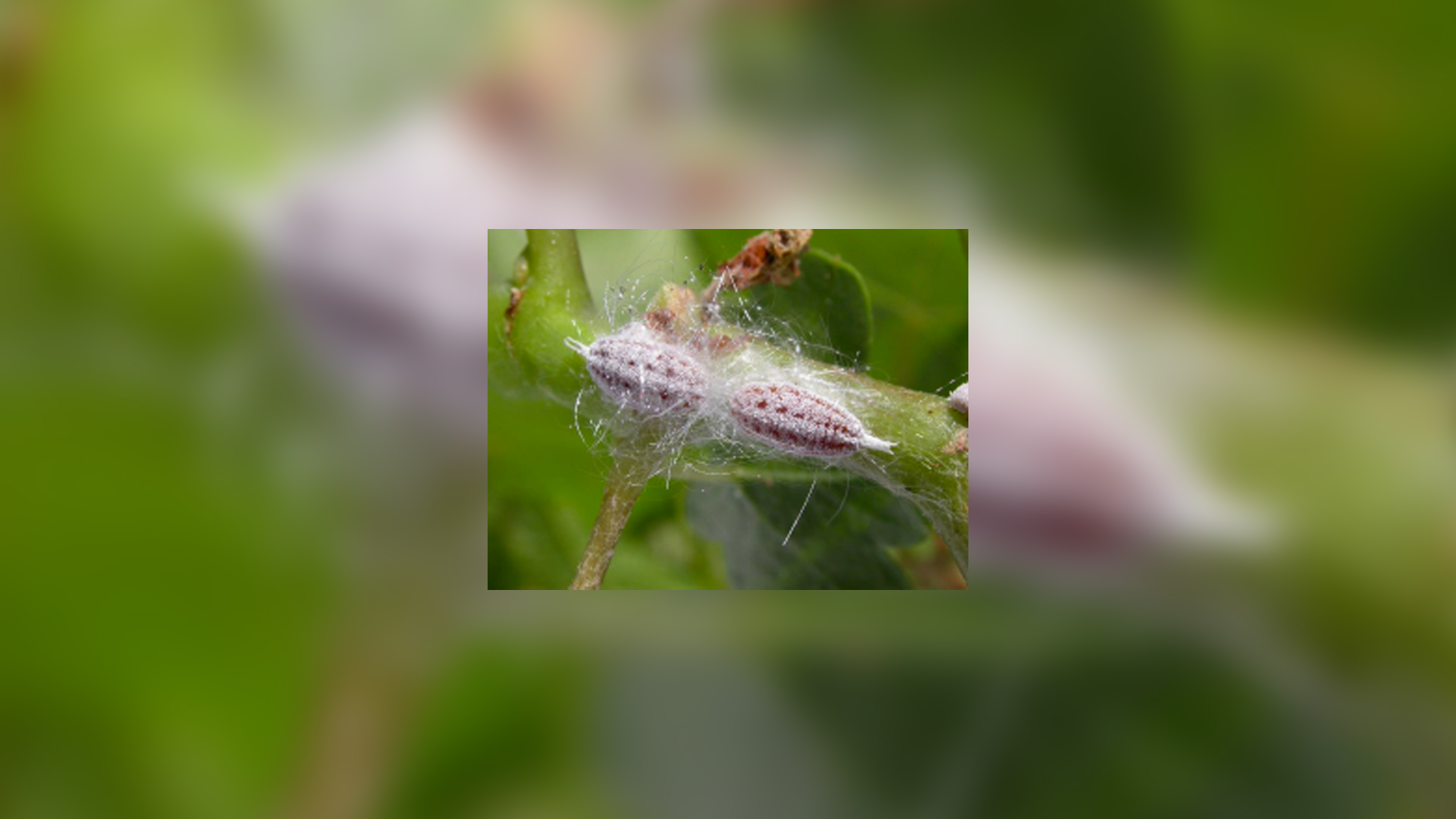
Based on last year’s infestation levels of Gill’s mealybug in pistachio orchards, Bayer Crop Sciences representative Manuel Jimenez said even with standard winter mortality, he expected numbers would be up this spring. He reported that the first generation was sited in Kern County in early May and by the third week of May, the pest was emerging in Kings county.
Gill’s mealybug, Ferrisia gilli is a species of mealybug that was identified as a pest in California pistachio orchards in 2003. It is now found in most counties with pistachio production. Adult females are flat and oval and may be covered with crystalline filaments. Nymphs have three developmental stages and resemble smaller versions of adult females. Females give birth to live young and three generations are produced in a year. After harvest, adult female GMB migrate to main tree scaffolds where they are easily seen.
Areas of an orchard where nut clusters are covered with honey dew and sooty mold during the summer should be noted and treated next spring.
Justin Nay of Integral Ag said treating the first generation of GMB provides the most effective control over the season. Scouting for crawlers in May can help determine the population level in an orchard. He said the standard model for treatment is finding one in ten clusters. Growers with less tolerance for damage may choose to treat when finding one per 25 clusters, he said. Most pistachio orchards have a low level of resident GMB, but blow ups in population can occur. This pest can also be transported between orchards or areas by equipment or bins. Pruning or grafting tools can also spread GMB.
Jimenez said if an insecticide application was not done in May, there is still a control window in June using a contact product and targeting nymphal stages.
There are several species of predators and parasitoids that can suppress GMB densities. Predators include green lacewings and a ladybird beetle whose larva resembles mealybug larva.
The UC IPM Guidelines note that biological control can be effective where pyrethrin based insecticides are not used. See more on the UC IPM web site.











